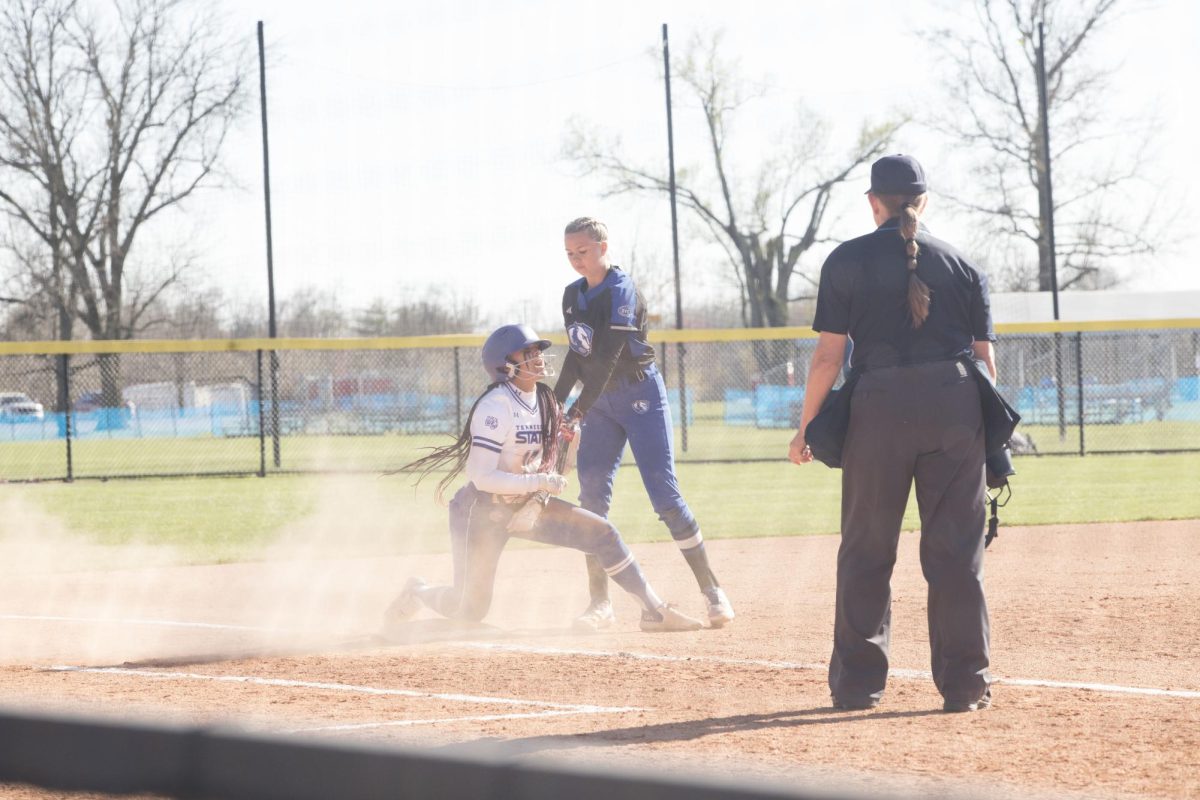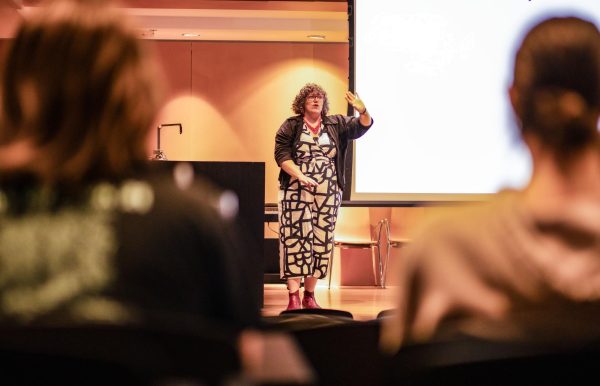Head: Speaker’s talk addresses the theme of economic justice
Aimee Cox spoke last night in a speech titled “Women of Color: Redefining the Political through Creative Activism.”
Cox talked about how a project to give voice to those in a homeless shelter she worked at became the BlackLight Project.
The BlackLight Project was started at the Fresh Start Shelter in Detroit and from residents who used dance, spoken word along with performance and other types of art to get out their frustrations.
Cox said BlackLight addresses issues in the community through the arts
The project also started because workers at the shelter organized the Headscarf Protest, which occurred at the same shelter.
Staff workers at the shelter were told they could not wear headscarves because they made the workers look “ghetto” and unprofessional.
The workers were forbidden to wear headscarves in the activity room, lobby and other rooms.
Staff members protested this by refusing to go on shelter job searches and attend education meetings.
The project led to performances and work within the community of Detroit and became a community activist program.
The project is now mostly in the community and has been expanded to Newark, New Jersey as well.
Cox also discussed her work with “The Body and the City: Black Women in Newark Redefine Public Space,” which is a project where young girls interview older women in Newark.
This project started in fall of 2009.
An example of questions asked is how women reacted if they lived during or simply heard about the Detroit Riots of 1967 where police officers beat black members of the community or questions about the fear of Red October.
Red October is a fear of gang members killing girls in Newark as part of their initiation.
Even though this has been disputed as a myth, the women still expressed their fear of this so-called tradition.
“The Body and the City: Black Women in Newark Redefine Public Space” has grown over the years from seven to 27 young women who are involved.
Monica Barra, a graduate student at Rutgers University, works in Newark as part of the BlackLight and the Body and the City project and was present at the speech.
“I’ve been conducting interviews and facilitating discussions and workshops with the girls and teach them to talk amongst themselves to find ways to address problems in their personal and public lives,” Barra said.
Barra said the 13 to 18 year old girls talk about how to be safe in the city and about healthy relationships with teachers, parents, significant others and friends with BlackLight.
The BlackLight Project is a place for young girls to share their thoughts, whether they are happy thoughts or thoughts of frustration.
Barra also works with the Body and the City Project interviewing older women in Newark.
LaToddra Butler, also present at the speech, works with the BlackLight Project in Detroit.
She wants to do a similar project to the Body and the City Project in Detroit.
“The spaces in Newark and the spaces in Detroit are similar,” Butler said.
Butler facilitates workshops, dance, blog and poetry writing through the BlackLight Project in Detroit.
Cox wanted people at the speech to get a different view on race and to think different about where power is located in communities and hoped The Body and the City Project would get community members to change how they act and view society.
Cox is a professor of African-American studies at Rutgers University and has been doing this research since the late 1990s.
Heather Holm can be reached at 581-2815 or










































